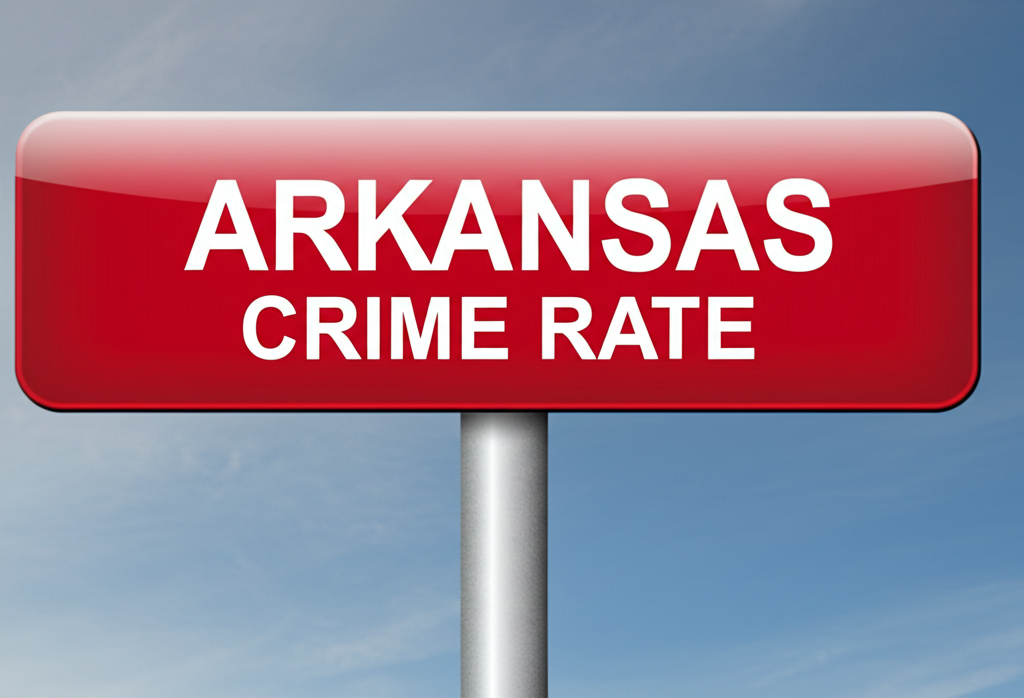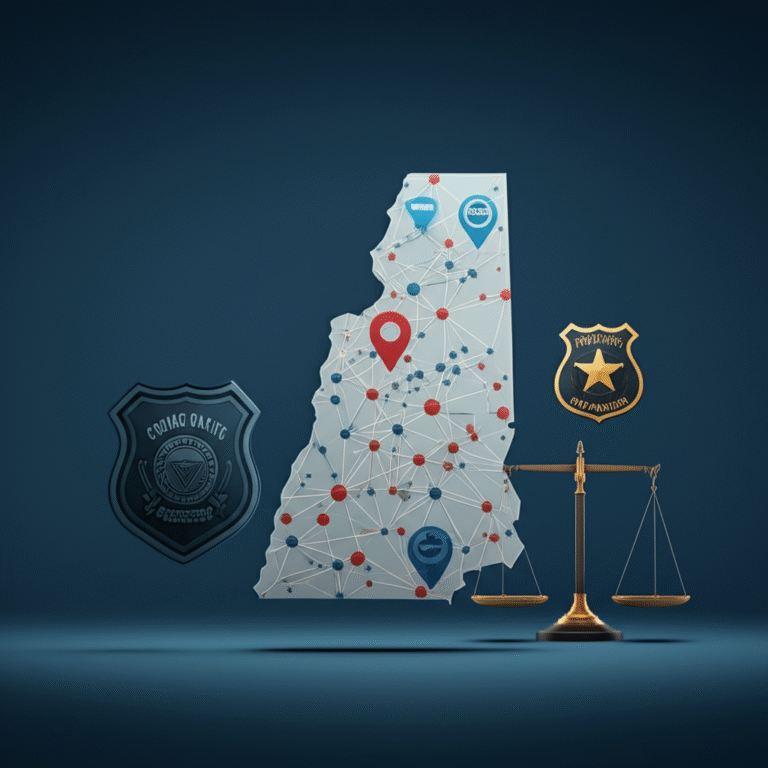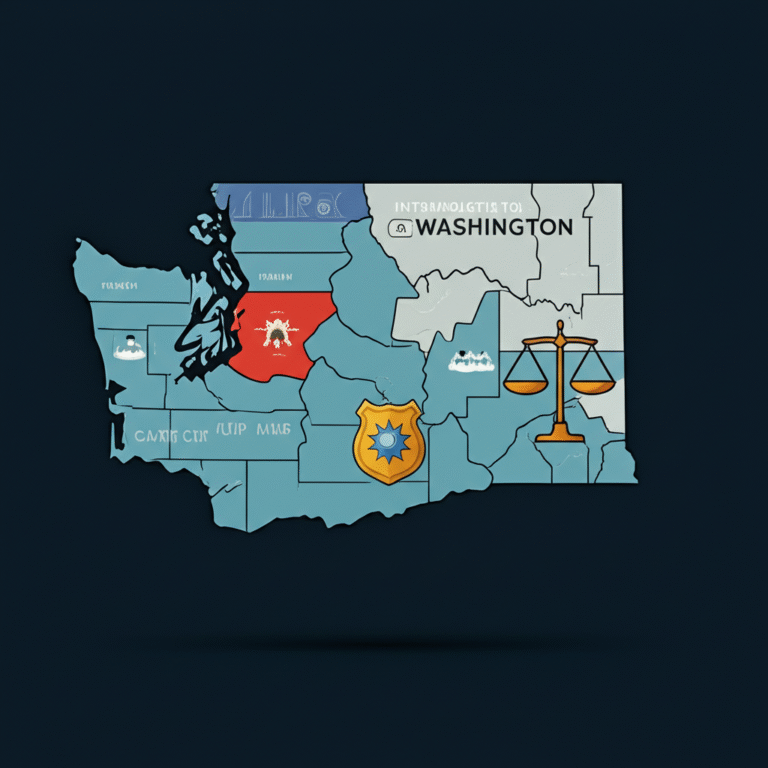Arkansas Crime Rate: A Comprehensive Analysis of Crime Statistics and Trends

Understanding Arkansas crime rate helps communities address challenges and improve safety. Recent data from the Uniform Crime Reports by FBI reveals how the state compares to national averages, with a focus on violent crime and property crime trends. This section lays the groundwork for analyzing where progress is being made—and where risks remain.
This analysis explores Arkansas crime statistics in depth, compares them to national benchmarks, and highlights how law enforcement and residents collaborate to strengthen public safety.
Overall Crime Rate in Arkansas
To grasp the full picture of safety in Arkansas, it’s essential to start with the basics: the state’s crime rate. According to the latest Uniform Crime Reports, this figure combines both violent crime and property crime data, offering a snapshot of risks residents may face daily. Let’s break down what these numbers mean and how they shape life in the Natural State.

- The total crime rate in Arkansas stands at 28.49 incidents per 1,000 residents.
- In 2023, law enforcement recorded 87,394 crimes statewide—19,016 involved violent crime, while 68,378 were property crime cases.
- Crime statistics reveal that property-related offenses, like theft, occur far more frequently than violent acts.
| Category | Total Crimes (2023) |
|---|---|
| Violent Crime | 19,016 |
| Property Crime | 68,378 |
| Overall Crime Rate | 28.49 per 1,000 residents |
Comparison of Arkansas Crime Rates to National Averages
How does Arkansas measure up against the rest of the country? The latest Uniform Crime Reports reveal a clear pattern: the state’s crime rate consistently outpaces national averages in key categories. This comparison helps residents understand whether they face higher risks than people in other states—and where improvements might be needed most.
- Violent crime in Arkansas occurs at a rate of 6.20 incidents per 1,000 residents, compared to the national median of 4.00.
- Property crime rates tell a similar story, with Arkansas reporting 22.29 incidents per 1,000 residents versus the U.S. median of 19.00.
| Crime Type | Arkansas Rate | National Rate |
|---|---|---|
| Violent Crime | 6.20 | 4.00 |
| Property Crime | 22.29 | 19.00 |
| Murder | 0.09 | 0.06 |
| Rape | 0.72 | 0.38 |
| Burglary | 4.08 | 2.51 |
| Motor Vehicle Theft | 2.18 | 3.19 |
Violent Crime Statistics in Arkansas
Understanding violent crime patterns in Arkansas requires a closer look at the numbers. According to the latest Uniform Crime Reports, the state’s crime statistics reveal both challenges and surprising details about safety risks. From deadly assaults to non-fatal attacks, these figures paint a clear picture of where the state stands.
- The violent crime rate in Arkansas is 6.20 incidents per 1,000 residents—a figure that translates to a 1 in 161 chance of becoming a victim.
- Breaking it down: murder occurs at a rate of 0.09 per 1,000 residents, while rape (0.72) and robbery (0.38) show varying levels of prevalence.
- Assault dominates violent offenses, accounting for 5.01 incidents per 1,000 residents—nearly double the national average.
Arkansas VS Overall USA Crime Rate
| Crime Type | Arkansas Rate | National Rate |
|---|---|---|
| Murder | 0.09 | 0.06 |
| Rape | 0.72 | 0.38 |
| Robbery | 0.38 | 0.67 |
| Assault | 5.01 | 2.64 |

Property Crime Statistics in Arkansas
While violent crimes often grab headlines, property crime impacts daily life for many in Arkansas. The latest Uniform Crime Reports reveal how thefts, break-ins, and vehicle-related offenses shape the state’s crime statistics. These numbers highlight both vulnerabilities and areas where Arkansas performs better than national averages.
- Residents face a property crime rate of 22.29 incidents per 1,000 people—meaning roughly 1 in 45 Arkansans experience such crimes annually.
- Breaking it down: Burglary occurs at 4.08 per 1,000 residents, while theft (16.03) dominates property-related offenses.
- Though less frequent, motor vehicle theft remains a concern at 2.18 incidents per 1,000 residents.
| Crime Type | Arkansas Rate | National Rate |
|---|---|---|
| Burglary | 4.08 | 2.51 |
| Theft | 16.03 | 13.47 |
| Motor Vehicle Theft | 2.18 | 3.19 |

Crimes Per Square Mile in Arkansas
Understanding crimes per square mile offers a fresh angle on Arkansas’s safety landscape. Unlike population-based metrics, this measure shows how crime spreads across the state’s physical space—a key factor for rural and urban planning. The latest crime statistics reveal surprising patterns compared to the national median.
- Arkansas records 15 crimes per square mile, significantly below the national median of 26.5.
- This lower density reflects the state’s mix of open spaces and smaller cities, though localized hotspots still exist.
| Location | Crimes Per Square Mile |
|---|---|
| Arkansas | 15 |
| National Median | 26.5 |

Top Ten Safest Cities in Arkansas
While Arkansas’s overall crime rate varies across regions, some communities stand out for exceptional public safety. These safest cities combine low crime levels with strong community engagement, offering residents peace of mind. Let’s explore where safety shines brightest in the Natural State.
- Cities like Donaldson, El Paso, and Adona lead the list with crime rates well below state averages.
- Smaller populations and proactive neighborhood programs contribute to these areas’ safety records.
| Rank | City |
|---|---|
| 1 | Donaldson |
| 2 | El Paso |
| 3 | Adona |
| 4 | Aubrey |
| 5 | Bismarck |
| 6 | Edgemont |
| 7 | Boles |
| 8 | Deer |
| 9 | Delaplaine |
| 10 | Everton |

Popular Cities in Arkansas and Their Crime Rates
Arkansas’s most well-known cities attract visitors and residents alike, but their crime rates tell varied stories. While places like Little Rock (the state capital) and thriving hubs such as Fayetteville or Bentonville drive economic growth, safety trends in these areas often reflect their size and local initiatives.
- Little Rock, the largest city, faces higher-than-average property crime rates compared to smaller towns like Bentonville.
- College towns such as Fayetteville balance vibrant communities with moderate crime levels influenced by population density.
- Many popular cities align with Arkansas’s statewide property crime rate of 22.29 per 1,000 residents, though violent crime rates may differ.
| City | Notable Feature |
|---|---|
| Little Rock | State capital, cultural hub |
| Fayetteville | Home to University of Arkansas |
| Bentonville | Walmart headquarters, rapid growth |
| Fort Smith | Historic riverfront community |
| Springdale | Diverse industrial economy |

Crime Data Methodology
Understanding how crime data is collected and analyzed helps explain the numbers behind Arkansas’s crime trends. This section breaks down the processes and sources used to compile statistics, ensuring transparency and reliability.
- The FBI’s Uniform Crime Reports serve as the backbone of this analysis, drawing raw data from over 18,000 local law enforcement agencies across the U.S.
- Figures reflect crimes reported during the 2023 calendar year, with the FBI releasing finalized data in October 2024. Updates occur annually to track changes over time.
- A nationwide methodology examines 9.4 million reported crimes, including 2 million geocoded locations, to address gaps like underreporting or errors in local records.

Additional Insights on Arkansas Crime Rates
While crime statistics provide a snapshot of safety in Arkansas, deeper context helps residents and policymakers interpret the numbers. Below are key observations that complement earlier findings.
- Current crime trends in Arkansas show no significant spikes or drops compared to previous years, suggesting stable patterns overall.
- The state’s safest cities—like Donaldson and El Paso—stand out for low crime density, but specific high-risk areas aren’t formally identified in the data.

Conclusion
In wrapping up our comprehensive analysis of Arkansas’s crime statistics and trends, it’s clear that both violent crime and property crime play significant roles in shaping the state’s public safety landscape. The data, sourced from the Uniform Crime Reports, underscores the importance of continued vigilance and proactive measures by law enforcement and the community alike.
While Arkansas faces challenges with higher-than-average rates of assault, theft, and burglary, the state also showcases areas of success, particularly in its safest cities where community engagement and effective criminal justice strategies have made a noticeable impact.
The interplay between social issues, law-related events, and public services highlights the complexity of addressing crime. Moving forward, leveraging statistical data sets and fostering interdisciplinary approaches that consider criminology, social psychology, and environmental law will be crucial in mitigating problem behavior and enhancing public safety.
As Arkansas continues to navigate these challenges, the collective effort of its society, government, and social institutions will be paramount in driving down crime rates and ensuring a safer future for all residents.




